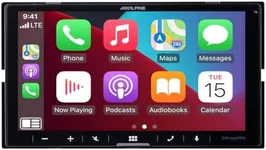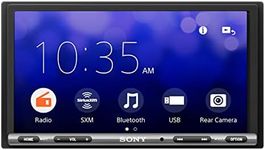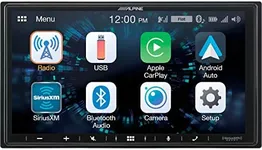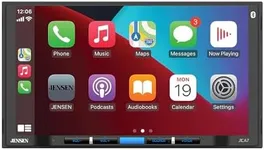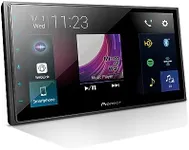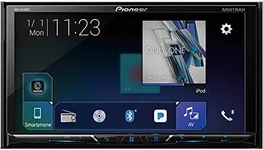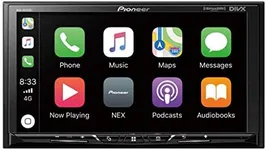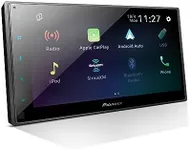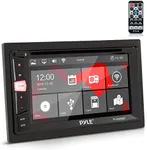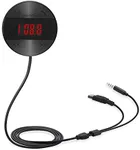Buying Guide for the Best Apple Carplay Receiver
Choosing the right Apple CarPlay receiver can significantly enhance your driving experience by providing seamless integration with your iPhone. It allows you to access apps, navigation, music, and more directly from your car's dashboard. To make the best choice, consider the following key specifications and how they align with your needs.Screen SizeScreen size refers to the diagonal measurement of the display on the receiver. This is important because a larger screen can make it easier to see and interact with apps, maps, and other features while driving. Screen sizes typically range from 6 to 10 inches. If you have a larger dashboard or prefer a more immersive experience, opt for a bigger screen. Conversely, if your car has limited space or you prefer a more compact setup, a smaller screen might be more suitable.
ResolutionResolution indicates the clarity and sharpness of the display. Higher resolution screens provide better image quality, making it easier to read text and view detailed maps. Common resolutions include 800x480, 1280x720, and 1920x1080. If you frequently use navigation or watch videos, a higher resolution can enhance your experience. For basic use, a lower resolution may suffice.
Touchscreen TypeTouchscreen type can be either resistive or capacitive. Capacitive touchscreens are more responsive and support multi-touch gestures, similar to modern smartphones. Resistive touchscreens require more pressure and are less responsive but can be operated with gloves. If you value quick and smooth interactions, choose a capacitive touchscreen. If you often wear gloves while driving, a resistive touchscreen might be more practical.
Connectivity OptionsConnectivity options include Bluetooth, USB, and auxiliary inputs. These are important for connecting your iPhone and other devices to the receiver. Bluetooth allows wireless connections, while USB and auxiliary inputs provide wired options. If you prefer wireless convenience, ensure the receiver has Bluetooth. For stable and high-quality connections, USB and auxiliary inputs are beneficial.
Audio QualityAudio quality is determined by the receiver's built-in amplifier and equalizer settings. High-quality audio can enhance your music and call experience. Look for receivers with advanced audio features like high-power amplifiers, customizable equalizers, and support for high-resolution audio formats. If you are an audiophile or enjoy listening to music while driving, prioritize receivers with superior audio capabilities.
Installation CompatibilityInstallation compatibility refers to how well the receiver fits into your car's dashboard and integrates with existing systems. Some receivers are designed for specific car models, while others are universal. Check the dimensions and compatibility of the receiver with your car's make and model. If you want a hassle-free installation, choose a receiver that is specifically designed for your vehicle.
User InterfaceUser interface encompasses the layout and ease of use of the receiver's software. A well-designed interface can make it easier to navigate through apps and settings. Look for receivers with intuitive and customizable interfaces. If you prefer simplicity and ease of use, opt for a receiver with a straightforward and user-friendly interface.
Additional FeaturesAdditional features can include navigation, voice control, and compatibility with other smart devices. These features can enhance your driving experience by providing more functionality and convenience. If you frequently use navigation or prefer hands-free control, look for receivers with built-in GPS and voice command capabilities. Consider your driving habits and preferences when evaluating these extra features.
